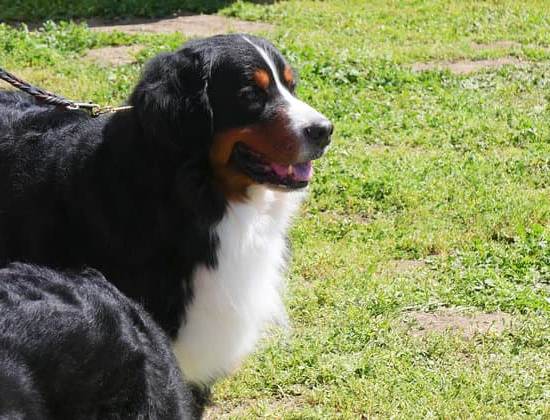Are you struggling with how to train your dog to behave in the car? Training your furry friend to be well-behaved during car rides is crucial for their safety and your peace of mind. In this article, we will explore the essential steps to help you train your dog to behave in the car, ensuring a stress-free and enjoyable travel experience for both you and your pet.
Many dogs struggle with car travel, exhibiting behaviors such as anxiety, restlessness, or even motion sickness. By understanding the importance of training dogs for car behavior, you can effectively address these issues and create a positive association with car rides for your canine companion.
From choosing the right equipment to implementing basic obedience training techniques and addressing common behavior issues, there are various aspects to consider when training your dog for car behavior. With the right approach and patience, you can help your dog become calm, relaxed, and well-mannered during car travel. So let’s dive into the essential strategies and tips for training your dog to behave in the car.
Choosing the Right Equipment
When it comes to training dogs to behave in the car, choosing the right equipment is crucial for their safety and comfort. Here are some of the best car restraints and accessories for dogs:
- Dog Seat Belts: These are designed to keep your dog secure during car rides, preventing them from moving around or attempting to climb onto your lap while you’re driving.
- Dog Car Seats: Much like a child’s car seat, a dog car seat provides a safe and comfortable space for your pet to ride in. It also helps prevent them from being thrown around in the event of sudden stops or accidents.
- Travel Crates: For larger dogs, a travel crate is an excellent option for keeping them contained and secure during car rides. The crate should be large enough for your dog to stand up, turn around, and lie down comfortably.
- Barrier Systems: If you have an SUV or hatchback, consider using a barrier system to create a partition between the back seat and the cargo area. This prevents your dog from roaming freely throughout the vehicle.
It’s important to choose equipment that is appropriate for your dog’s size and temperament, as well as ensuring that it meets safety standards for car travel. Additionally, always remember to introduce your dog to the equipment gradually and positively so that they associate it with comfort and security. By using the right restraints and accessories, you can create a safe and enjoyable traveling experience for both you and your furry friend.
Preparing Your Dog for Car Travel
One of the most important aspects of training a dog to behave well in the car is to build positive associations with the vehicle. Many dogs may feel anxious or fearful about car rides, so it’s crucial to create an environment that helps them feel safe and comfortable.
To start, you can begin by simply introducing your dog to the car while it is parked, allowing them to explore and sniff around without any pressure to get inside. Rewarding them with treats and verbal praise for showing curiosity or calm behavior around the car can help create a positive association.
Once your dog becomes more comfortable being near the car, you can begin associating positive experiences with it. This can include giving your dog treats or their favorite toys while they are sitting inside the car, gradually increasing their time spent inside while providing positive reinforcement.
It’s important not to rush this process and allow your dog to progress at their own pace. The goal is for them to see the car as a safe and enjoyable place rather than something to be feared.
In addition to treats and toys, using calming pheromone sprays or diffusers in the car can also help reduce anxiety for some dogs. These products mimic natural pheromones that help dogs feel more relaxed, which can be especially beneficial during the initial stages of building positive associations with the car. By taking these steps, you can help ensure that your dog feels comfortable and secure during car rides, making the experience much more enjoyable for both of you.
| Aspect | Details |
|---|---|
| Positive Associations | Using treats and toys in association with the car |
| Calming Products | Using calming pheromone sprays or diffusers in the car |
| Pace | Allowing the dog to progress at its own pace |
Basic Obedience Training Techniques
Training your dog to behave in the car involves not only addressing behavior issues but also teaching basic obedience commands that will make car rides safer and more enjoyable for both you and your pet. Here are some essential training techniques to teach your dog before hitting the road:
- Sit Command: Teaching your dog to sit in the car is important for safety reasons. A dog that remains seated is less likely to distract the driver or move around unpredictably. To train this command, use treats or toys to lure your dog into a sitting position, say the word “sit” as they lower their bottom, and reward them when they remain seated.
- Stay Command: The “stay” command is crucial for keeping your dog in one place while the car is in motion. Start by practicing this command at home and then gradually introduce it in the car with short trips around the block. Reward your dog for staying put even when there are distractions outside the window.
- Down Command: Teaching your dog to lie down in the car can help reduce anxiety and create a calming effect during travel. Use positive reinforcement techniques to encourage this behavior, such as rewarding your dog whenever they lay down on cue.
By mastering these basic obedience commands, your dog will be better prepared for a stress-free and well-behaved car ride experience. Remember to be patient and consistent in your training efforts, and always use positive reinforcement methods to create a positive association between your pet and car travel.
Counter Conditioning
Some dogs may have negative associations with car rides due to past experiences, such as going to the vet or being left alone in the car. Counter conditioning is a training technique that aims to change these negative responses into positive ones by pairing the car with something enjoyable for the dog. This can help them remain calm and relaxed during car rides, reducing anxiety and stress for both the dog and the owner.
One effective way to counter condition a dog for car travel is by associating the car with something pleasurable, such as treats or their favorite toys. Start by simply having your dog spend time in the car without going anywhere, and gradually introduce positive reinforcement like treats or playtime. Over time, this can help your dog develop a more positive outlook on car rides and reduce their anxiety.
It’s important to be patient when using counter conditioning techniques, as it may take some time for your dog to adjust to these new associations. Consistency and positive reinforcement are key in helping your dog remain calm and relaxed in the car, ultimately making car rides a more enjoyable experience for both you and your furry companion.
| Counter Conditioning Tips | Benefits |
|---|---|
| Associate the car with treats or toys | Reduces anxiety for dogs during car rides |
| Be patient and consistent | Helps dogs develop positive associations with the car over time |
| Use positive reinforcement | Makes car rides a more enjoyable experience for both dogs and owners |
Desensitization
Gradual Exposure
One of the key components of desensitization is gradual exposure to the car. Start by simply allowing your dog to explore the car while it is stationary. This will help them become familiar with the car’s interior and reduce any anxiety they may have about it.
Once they are comfortable being inside the vehicle, start by sitting in the car with them without actually driving anywhere. Gradually increase the amount of time spent in the car before moving on to short trips around the neighborhood.
Positive Reinforcement
During each step of desensitization, it’s important to use positive reinforcement to help your dog associate being in the car with pleasant experiences. Offer treats and praise when they enter the car willingly and remain calm during short trips. This will help create a positive association with car rides and reduce their anxiety over time.
Patience and Consistency
Desensitization is a process that requires patience and consistency. It’s important not to rush your dog or force them into situations that cause distress. Take things at their pace and be consistent with your approach. With time and dedication, you can help your dog overcome their fear of car rides and become more comfortable traveling with you.
Dealing With Motion Sickness
For some dogs, car rides can be a nauseating experience, leading to anxiety and discomfort. Just like humans, dogs can also suffer from motion sickness, which can make car travel stressful for both the dog and the owner. However, there are several tips and strategies that can help alleviate motion sickness in dogs and make car rides a more pleasant experience for everyone involved.
One of the first steps in dealing with motion sickness in dogs is to ensure that they have an empty stomach before getting into the car. Feeding your dog a few hours before the car ride can help prevent nausea and vomiting. Additionally, it’s important to keep the vehicle well-ventilated and avoid sudden stops or sharp turns while driving, as these movements can exacerbate motion sickness in dogs.
Another effective strategy for managing motion sickness in dogs is to desensitize them to the car environment through gradual exposure. This can involve simply sitting in the parked car with your dog without actually going anywhere, gradually building up to short drives around the neighborhood. Over time, this exposure can help reduce their anxiety and discomfort associated with car rides.
In some cases, medication prescribed by a veterinarian may be necessary to manage severe cases of motion sickness in dogs. Anti-nausea medications or sedatives may be recommended for particularly anxious or nauseous dogs to help them relax during car rides. It’s important to consult with a professional before administering any medication to your dog and only use it under their guidance to ensure your pet’s safety and wellbeing.
Troubleshooting Common Behavior Issues
Dealing with common behavior issues such as barking, whining, and hyperactivity in the car can be a challenge for many dog owners. These behaviors not only make car rides unpleasant for both the dog and the owner but can also pose a safety risk. Fortunately, there are several techniques and strategies that can help address these issues and ensure stress-free travel with your furry companion.
Identifying the Root Cause
Before addressing unwanted behavior in the car, it’s important to identify the root cause of the problem. Barking, whining, and hyperactivity can be triggered by various factors such as anxiety, excitement, fear, or discomfort. Understanding what is causing your dog’s behavior will help you tailor your training approach to effectively address the issue.
Implementing Positive Reinforcement
Using positive reinforcement techniques is crucial when addressing behavior issues in the car. Rewarding good behavior with treats, praise, or toys can help your dog associate calmness and quietness with positive outcomes. For example, if your dog remains quiet during a car ride, reward them with a treat or verbal praise to reinforce this desirable behavior.
Creating a Comfortable Environment
Creating a comfortable environment in the car can also help reduce barking, whining, and hyperactivity. Consider using familiar items such as their favorite blanket or toy to help them feel secure during the ride. Additionally, ensuring proper ventilation and temperature control within the car will contribute to their overall comfort and reduce potential triggers for unwanted behavior.
By implementing these strategies and techniques while addressing common behavioral issues in the car, you can create a more enjoyable and safe travel experience for both you and your beloved pet. Remember that patience and consistency are key when training your dog for better behavior in the car.
Safety First
When it comes to traveling with our furry companions, their safety should be the top priority. Ensuring that your dog is secure and comfortable during car travel not only protects them from potential accidents but also creates a more enjoyable experience for both you and your pet.
One of the best ways to keep your dog safe in the car is by using a proper restraint. This can include a harness that attaches to a seatbelt or a secured crate in the back of the car. It’s important to choose the right size and type of restraint for your dog, as well as ensuring that it is installed correctly to prevent any accidents or injuries.
In addition to securing your dog, it’s essential to make sure they are comfortable during car travel. This means providing them with a familiar blanket or bed, ensuring proper ventilation, and allowing them regular breaks for bathroom breaks and stretching their legs. By making their travel environment as comfortable as possible, you can help reduce anxiety and stress during car rides.
Conclusion
In conclusion, training your dog to behave in the car is an essential part of responsible pet ownership and ensuring the safety and well-being of both your dog and yourself during car rides. By following the tips and techniques outlined in this article, you can effectively prepare your dog for car travel, address behavioral issues, and create a positive and stress-free experience for both you and your furry companion.
Remember that patience and consistency are key when it comes to training dogs for car behavior. Celebrate every small success along the way, whether it’s getting your dog comfortable with a new car restraint or teaching them to remain calm during car rides. Each step forward is a step towards enjoying peaceful and enjoyable car journeys with your well-behaved dog.
By taking the time to properly train your dog for car travel, you can also strengthen the bond between you and your pet. The trust and obedience built through car behavior training will not only make for safer travels but also enhance your overall relationship with your canine companion. With dedication and effort, you can look forward to many happy adventures together on the road.
Frequently Asked Questions
How Do I Get My Dog to Calm Down in the Car?
To get your dog to calm down in the car, it’s important to gradually acclimate them to the experience. Start by letting them explore the car while it’s stationary, then take short drives before gradually increasing the duration.
Create a positive association with the car by offering treats and praise, and consider using a special toy or blanket for comfort during rides.
How Do I Desensitize My Dog to Ride in the Car?
Desensitizing your dog to riding in the car involves exposing them to the car in a gradual and controlled manner. Begin by having your dog near the car without actually getting in, then slowly progress to sitting inside with the engine off before eventually going for short drives.
Use positive reinforcement such as treats or toys to create a positive association with being in the car.
How Do You Train a Dog to Be Reactive to Cars?
Training a dog to be less reactive to cars requires patience and consistency. Start by identifying what triggers their reaction – whether it’s the sound of cars, their movement, or something else.
Then use counter-conditioning techniques such as systematically exposing them to the trigger at a distance while rewarding calm behavior. Over time, gradually decrease the distance between your dog and the cars as they become more comfortable and less reactive.

Welcome to the blog! I am a professional dog trainer and have been working with dogs for many years. In this blog, I will be discussing various topics related to dog training, including tips, tricks, and advice. I hope you find this information helpful and informative. Thanks for reading!





